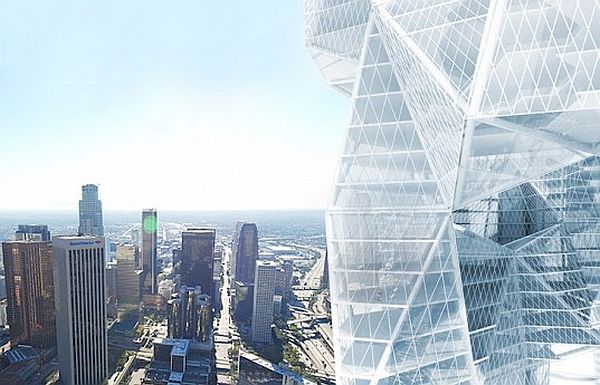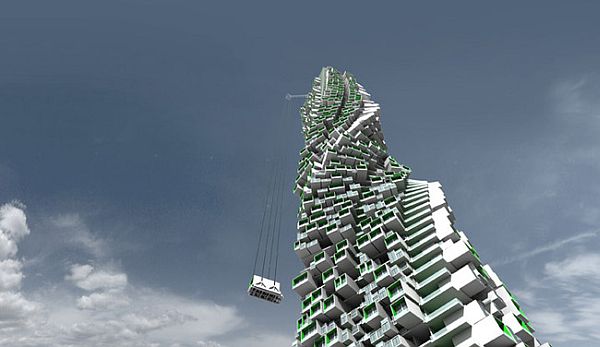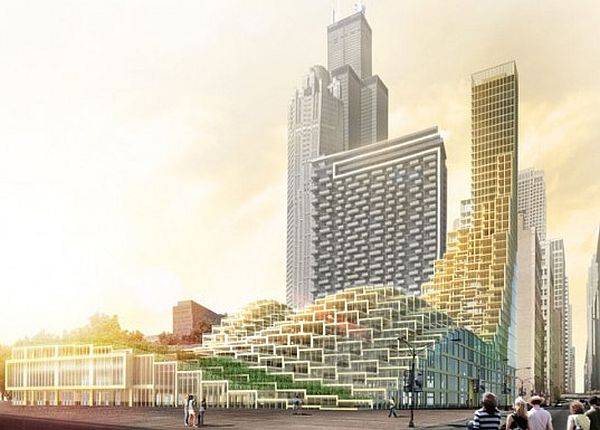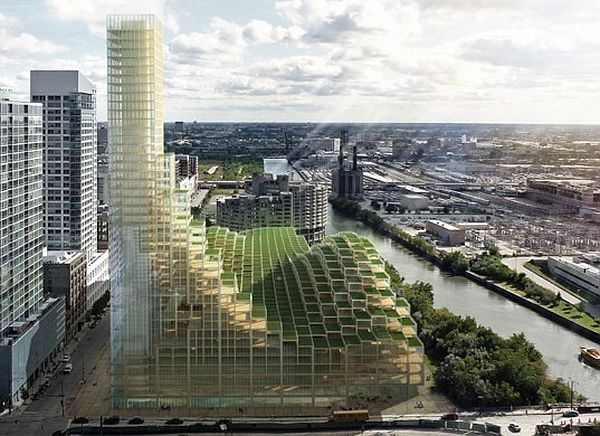With an ever-increasing urban population, living solutions also need to become more sustainable. There is a growing requirement for expandable solutions that are only possible if cities are made modular in nature. Here are some innovative sustainable living solutions that have been introduced in varied urban settings. Such solutions can inspire future efforts to make many other cities modular.
Propagate skyscraper, Canada

Carbon dioxide capture currently takes place at sources. However, this requires a huge investment in infrastructure, storage and other facilities. Now, a sustainable living solution is proposed to eliminate the need for additional investment at sources. The Propagate tower can assimilate carbon dioxide within its structure itself. Its structure is made of such materials that can capture carbon dioxide in the air and can further produce a solid material for construction. Thus, the self-propagating structure also makes it easier to occupy and adapt to it.
Car-free Skyvillage, Los Angeles, USA

This proposed Skyvillage is expected to connect four city quadrants in order to enhance cultural interaction among them. This giant structure is proposed to have a lifestyle that would be free of environment-polluting cars. Its huge pillars would act like green filtering towers. The vegetation planted in this structure would absorb all the pollution on freeways. Thus, it can become an amazing sustainable living solution for an urban setting like Los Angeles.
Seeds of Life skyscraper, Egypt

Cairo city has long been dealing with its bad pollution and has now been planning to develop sustainable living solutions that are based on the concept of recycling and waste management. The waste materials in the city would be used to develop buildings with varied types of living units for small to large families. Some other larger units would be developed as recreational facilities. While there would be recycling facilities to process waste and produce biogas and electricity, there would also be spaces to collect and manage rainwater.
Jenga-like building concept by Y Design, Hong Kong

Y Design has thought of an innovative concept of a Jenga-like building that would have around 75 stories. This modular tower would be a vertical neighborhood community of around 2,000 units. These units would be rearranged on a regular basis after a scheduled period. With custom-fit features and unit size, these flexible units would be constructed using eco-friendly building materials. These modular units would be moved to another portion of the tower every five years so that the residents may gain new experiences from time to time.
Big Wood skyscraper by Michael Charters, Chicago, USA

Michael Charters picked up wood as his construction material instead of going for steel and concrete. He has designed the prototype for Big Wood skyscraper that would be a sustainable university complex for multiple uses. It is supposed to have a library, park, retail complex and housing area. This timber construction would be able to absorb carbon and reduce environmental pollution.
Summary:
In modern times, we require living solutions that are modular, as well as greener in nature. That is the reason architects across the world have been looking at sustainable building materials and designs.



